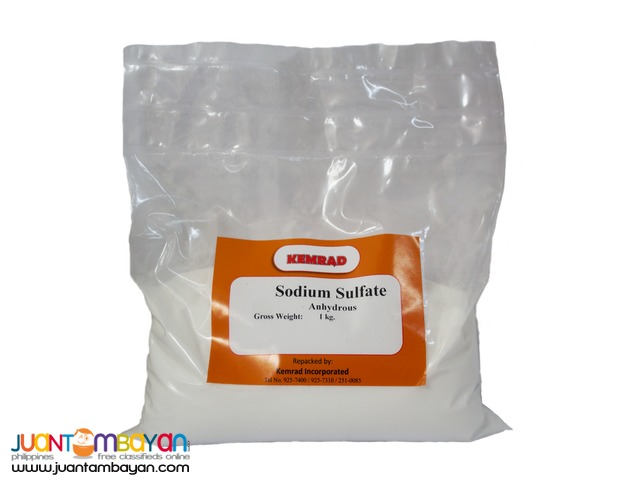
Sodium Sulfate Anhydrous is chemically very stable, and is unreactive toward most oxidizing or reducing agents at normal temperatures.
It is a neutral salt and will form aqueous solutions with a ph of 7.
Anhydrous sodium sulfate occurs in arid environments.
Anhydrous sodium sulfate is used in the laboratory as an inert drying agent for removing traces of water from organic solutions. It is only effective below 30°C, but is fairly inert and can be used with a variety of materials.
Properties
- Anhydrous sodium sulfate is in the form of hygroscopic white powder, and has no odor.
- Formula: Na2SO4
- It is soluble in water, but insoluble in ethanol.
- Its boiling point is 1100ºC, and melting point is 880 - 888ºC.
- This compound is stable under ordinary conditions, but at a high temperature, it is reduced to sodium sulfide.
- Specific gravity: 2.66-2.75.
- Its density is 1.464 /g cm3.
- It assumes a monoclinic structure at 100ºC, and above 250ºC, it assumes a hexagonal structure.
- It does not react with oxidizing agents at normal temperature.
Uses
- Anhydrous sodium sulfate is mainly used in laundry detergents.
- Another major use is for manufacturing wood pulp, in the Kraft process.
- It is also used for manufacturing textiles. As it reduces negative charges on fibers, it helps the dyes penetrate evenly, and thus aids in 'leveling'.
- It is used in the glass industry, not for producing glass, but for removing air bubbles from molten glass. It also prevents scum formation, as it fluxes the glass.
- The other uses of anhydrous sodium sulfate include starch manufacture, in carpet freshmen, in frosting windows, and also as an additive to cattle feed.
- It is also used in the laboratory as an inert drying agent for organic solutions. In addition to all these uses, it is used in the electronics and water treatment industry.
- It has been discovered that anhydrous sodium can dissolve fine electroplated micrometer gold, which is found in electronic products such as connectors, switches, and pins.
Facts
- Anhydrous sodium sulfate is found in nature in the form of a mineral, known as thenardite.
- It is the sodium salt of sulfuric acid.
- When it grows in the pores of stones, it can exert pressure on the rocks, and make the structures crack.
- It tends to attract iron and organic compounds.
- The production of this compound is 6 million tons, which makes it one of the world's majority commodity chemicals.